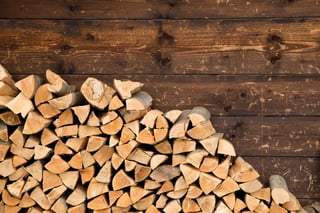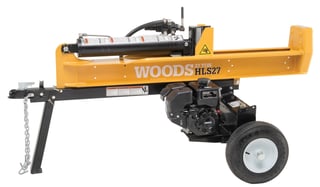
If you enjoy an occasional fire in the living room fireplace or backyard fire pit, it’s no big deal to split the wood you need with an
These powerful machines can make short work of transforming big chunks of wood into burnable logs, but you need to respect their power. Check out these 10.5 log splitter safety tips.
1. Read the owner’s manual. This isn’t a machine you can figure out as you go along; read the manual carefully before you start. Even if you’ve used other splitters before, read the manual to learn the specifics of equipment safety for the particular machine.
2. Wear protective gear. Wear boots or heavy shoes, preferably steel-toed, when working. Avoid loose clothing,
3. Splitters

4. Keep helpers (and observers) at a distance. The splitter is designed for one-person operation. Chips and splinters can fly through the air, so everyone other than the operator should be at least 10 feet away when the splitter is in action. Dogs and other pets should be secured well out of the work area.
5. Choose the right work area. Set up the machine on a flat, level surface and block the wheels. Don’t work if it’s muddy, wet or icy.
6. Work in a well-lit area. If
7. Don’t use gas-operated splitters in an enclosed space. You may be tempted to use a shed or garage for a workspace because it’s well-lit and out of the elements. Don’t do this as it’s dangerous. Gas-operated splitters emit carbon dioxide, which can be deadly if it builds up in an enclosed space.
8. Watch how the log is splitting. Different types of wood split differently, depending on the density,
9. Stop when making adjustments. If a log does split badly, stop the machine before you change its position in the splitter. Don’t stick your fingers in a crack in a partially split log; it can close quickly, causing injury or even the loss of your finger.
10. Save your back. The repetitive lifting involved when putting logs onto the splitter can do a number on your back after a long day of wood-splitting. Remember to lift from your knees. If you often have large, heavy logs to split, consider investing in a splitter that you can operate either horizontally or vertically.
10.5. Don’t operate the splitter while you’re under the influence. You know enough about power equipment safety not to use the splitter after a beer or two. You also shouldn’t use it if you’re taking cold medicine or any other medication that might leave you less than 100% alert.
Splitting wood yourself can save you a lot of money, and using a splitter can save you time and effort. Follow these tips to save you – and your helpers – from the risk of injury.
Ready to learn more about log splitters? Check out our special offers, then talk to an expert at Little’s.

